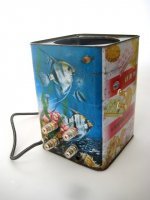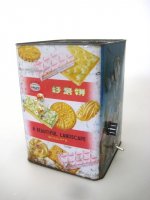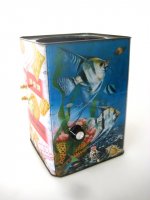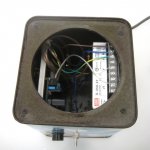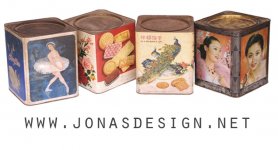Read HERE... my comments (and TheDealer's) about it are there. I have to specify (so you can weigh my words) that previously I was enjoying music with a Creative HT system...another galaxy, of course.
But, if I'm quite new to Hi Fi, a friend of mine is quite an old date "aficionado" (and we both are musician.....so we think to know the true sound of instruments that we would like to listen from our hi fi systems)...read about it on that link 'till the end.
There's also a comparison made by VBro between the not so different TA3020 (by 41Hz) and others famous amplifier. Then go to 41Hz website and you can read that sta517b and TA3020 are considered as "excellent" in a table(I don't remember who wrote it, but is linked on 41Hz website).
I hope you can get some conclusion by this comparison chain....
P.S.: Once I listened to a tube amp: I don't like the warm tone of tubes.
You are entitled to your opinion of course. But if you are basing a judgement of all tube amps on a single listen to a single amp you are perhaps not doing yourself any favours.
..they are not linear elements, so they cannot preserve the original signal,
Can I sugest a little research first? You might be surprised at the respective linearity of tube and solid state devices.
moreover the tubes in Helder's buffer are made for 220V c.a, and here powered at (if I am not wrong) at about 40V= as a result you obtain a lot of typical tube distortion. If I had to try a valve buffer I would try Oatley Electronics one changing caps and rising voltage to reach max valve voltage [about 30-40V?] (their valves need lower max voltage= less distortion, still tube style).
But personally I would invest my money on a very good DAC(WM8741 or ESS Sabre Reference, for exemple), THIS (of course IMHO) makes music natural, not sweeten music with tubes...
SMD resistors are actually very very easy to swap. Much easier than through-hole! It's a question of technique. Then it's almost like cheating, it gets so easy.
This video shows smt soldering pretty well, how easy it is: YouTube - Soldering SMD 0805 Capacitor
1) Melt a small speck of solder onto one of the pads
2) Using tweezers, lay the part onto the pad.
3) Holding the part, melt the solder, fixing the part to the board.
4) Solder the other side using a little more solder.
5) Resolder the first joint, adding a little more solder.
Desoldering is done by simply adding as much solder to both joints as possible. Keep them both warm and the part can easily be flipped off the board.
I hope I'm not being meddlesomeExcuse me if I am. It's just that I hated surface-mount, but now I am enlightened and wish to share the knowledge bestowed on me

Not at all, I'm grateful for the info. I just haven't soldered SMD, don't trust my old eyes that much and *assumed* it would be harder. Like all of us I'm more comfortable with something I know.
Lets just say "can we have a reasonably accessible way to alter the gain in this design please? " And then leave it up to the designer to implement, if its SMD I'll have to learn.
I would like to report that my T2 seems settled-in now. It sounds really beautiful. Appreciation to Hifimediy & Nick to bring out such good product.
I had a chance last week to compare my friend's top dollar system: DCS sacd > DCS DAC + Upsampler > Theta processor > Bryston amp > Kef floorstander against an el cheapo combo: laptop + foobar>Maverick Audio D1 DAC>Charlize TA2020. And I think the second combo sounds way better. From memory, that Charlize has a similar sound signature to my T2.
Perhaps that was just my narsistic reaction (as new Tripath fans), but 2 other audio DIYers that present on the listening session have same opinion (we think that there should be some kind of mismatching or misconfig on that damn expensive system). I didn't bring my T2, as I consider that it is not completed yet. Anyway, the session was really an eye & mind opener for my brand minded & thick wallet friend that cheap stuff doesn't have to sound cheap.
While write this I listen to T2 with Cowon D2 portable player connect directly to it. Still sounds very good (D2 IMHO sounds way better than iPods). I've ordered a pair of PIO K75 following a great review of T2 - K75 combo from a french forum. They should arrive on Friday, plan to put them & bypass the vol pot on Saturday & test it against the Charlize on Sunday. It will be a busy weekend.
I had a chance last week to compare my friend's top dollar system: DCS sacd > DCS DAC + Upsampler > Theta processor > Bryston amp > Kef floorstander against an el cheapo combo: laptop + foobar>Maverick Audio D1 DAC>Charlize TA2020. And I think the second combo sounds way better. From memory, that Charlize has a similar sound signature to my T2.
Perhaps that was just my narsistic reaction (as new Tripath fans), but 2 other audio DIYers that present on the listening session have same opinion (we think that there should be some kind of mismatching or misconfig on that damn expensive system). I didn't bring my T2, as I consider that it is not completed yet. Anyway, the session was really an eye & mind opener for my brand minded & thick wallet friend that cheap stuff doesn't have to sound cheap.
While write this I listen to T2 with Cowon D2 portable player connect directly to it. Still sounds very good (D2 IMHO sounds way better than iPods). I've ordered a pair of PIO K75 following a great review of T2 - K75 combo from a french forum. They should arrive on Friday, plan to put them & bypass the vol pot on Saturday & test it against the Charlize on Sunday. It will be a busy weekend.
I've ordered a pair of PIO K75 following a great review of T2 - K75 combo from a french forum. They should arrive on Friday, plan to put them & bypass the vol pot on Saturday & test it against the Charlize on Sunday. It will be a busy weekend.
which specifications you have choosen ? I am also interested to check up these caps. Please let us know when you get your first comparison results.
which specifications you have choosen ? I am also interested to check up these caps. Please let us know when you get your first comparison results.
2.2 uf 500v. But i think that it should be ok down to 1.5uf.
Last edited:
SMD resistors are actually very very easy to swap. Much easier than through-hole! It's a question of technique. Then it's almost like cheating, it gets so easy.
This video shows smt soldering pretty well, how easy it is: YouTube - Soldering SMD 0805 Capacitor
1) Melt a small speck of solder onto one of the pads
2) Using tweezers, lay the part onto the pad.
3) Holding the part, melt the solder, fixing the part to the board.
4) Solder the other side using a little more solder.
5) Resolder the first joint, adding a little more solder.
Desoldering is done by simply adding as much solder to both joints as possible. Keep them both warm and the part can easily be flipped off the board.
I hope I'm not being meddlesomeExcuse me if I am. It's just that I hated surface-mount, but now I am enlightened and wish to share the knowledge bestowed on me

Agree, changing a through hole parts is more easy to damage the PCB than a SMD one.
A friend of mine made this amp with a T2 and a meanwell smps. Looks nice!
Attachments
A friend of mine made this amp with a T2 and a meanwell smps. Looks nice!
Yes it does!
You are entitled to your opinion of course. But if you are basing a judgement of all tube amps on a single listen to a single amp you are perhaps not doing yourself any favours.
Can I sugest a little research first? You might be surprised at the respective linearity of tube and solid state devices.
You are right; actually I would be interested in listening to other tube amp, however I think it's more expensive and difficult building a linear tube amp, than using MOSFET or a class-D chip amp. To be honest once I listened to another tube amp, and I found it all but warm...however still don't like it. Of course it's only my opinion and taste. I will search more infos about tubes.
OK, I feel a bit guilty now having sent you off into a virtually infinite quest for knowledge where it can be very difficult even knowing where to start.
I think you are quite correct in saying that using tubes will be more, and probably much more, expensive. That said there as always will be some special case somewhere where using a tube might still work out cheaper, even now. Difficult is harder to assess as there are so many aspects, certainly if you avoid the class D design issues and take advantage of ready built boards or modules modern chips will be much easier, designing and building from scratch I'm not so sure.
Any, to help a bit, there is a tube forum here. There are some really good explanatory articles here audioXpress - Track Listings - Audio Classroom Series and in particular you could look at the power amp section article there http://www.audioxpress.com/resource/audioclass/ga100ac.pdf. If you look at Fig 1 showing plate characteristics for the common KT66 tube you can see just how linear those characteristics are. Now there are a large variety of tubes, each with different characteristics, and each capable of being used in different manners yielding a bewildering variety of designs and implementations. That said a good amplifier design will aim to place its operation within the linear portion of those plate-voltage lines and hence give linear response (without needing feeback correction for linearity) which modern devices would struggle to match.
At this point I'm going to shut up as this is really getting a bit off topic for the thread, but mainly out of cowardice in case there are any real tube designers lurking around here
I think you are quite correct in saying that using tubes will be more, and probably much more, expensive. That said there as always will be some special case somewhere where using a tube might still work out cheaper, even now. Difficult is harder to assess as there are so many aspects, certainly if you avoid the class D design issues and take advantage of ready built boards or modules modern chips will be much easier, designing and building from scratch I'm not so sure.
Any, to help a bit, there is a tube forum here. There are some really good explanatory articles here audioXpress - Track Listings - Audio Classroom Series and in particular you could look at the power amp section article there http://www.audioxpress.com/resource/audioclass/ga100ac.pdf. If you look at Fig 1 showing plate characteristics for the common KT66 tube you can see just how linear those characteristics are. Now there are a large variety of tubes, each with different characteristics, and each capable of being used in different manners yielding a bewildering variety of designs and implementations. That said a good amplifier design will aim to place its operation within the linear portion of those plate-voltage lines and hence give linear response (without needing feeback correction for linearity) which modern devices would struggle to match.
At this point I'm going to shut up as this is really getting a bit off topic for the thread, but mainly out of cowardice in case there are any real tube designers lurking around here
You are right; actually I would be interested in listening to other tube amp, however I think it's more expensive and difficult building a linear tube amp, than using MOSFET or a class-D chip amp. To be honest once I listened to another tube amp, and I found it all but warm...however still don't like it. Of course it's only my opinion and taste. I will search more infos about tubes.
OK, I feel a bit guilty now having sent you off into a virtually infinite quest for knowledge where it can be very difficult even knowing where to start.
I think you are quite correct in saying that using tubes will be more, and probably much more, expensive. That said there as always will be some special case somewhere where using a tube might still work out cheaper, even now. Difficult is harder to assess as there are so many aspects, certainly if you avoid the class D design issues and take advantage of ready built boards or modules modern chips will be much easier, designing and building from scratch I'm not so sure.
Any, to help a bit, there is a tube forum here. There are some really good explanatory articles here audioXpress - Track Listings - Audio Classroom Series and in particular you could look at the power amp section article there http://www.audioxpress.com/resource/audioclass/ga100ac.pdf. If you look at Fig 1 showing plate characteristics for the common KT66 tube you can see just how linear those characteristics are. Now there are a large variety of tubes, each with different characteristics, and each capable of being used in different manners yielding a bewildering variety of designs and implementations. That said a good amplifier design will aim to place its operation within the linear portion of those plate-voltage lines and hence give linear response (without needing feeback correction for linearity) which modern devices would struggle to match.
At this point I'm going to shut up as this is really getting a bit off topic for the thread, but mainly out of cowardice in case there are any real tube designers lurking around here
Thank you for the links.
OFF TOPIC CLOSED.
My T2s heatsink got suddenly so hot, I could not even hold my finger on it more than few seconds.
Just adjusted offset voltage to 0mv and now it runs cool (=warm) again!
It's strange to me too, pls tell me when this happen again, may be we can find out what happened.
Several months ago, I found that poor solder on some sta505 pins will lead to over heat.
It's strange to me too, pls tell me when this happen again, may be we can find out what happened.
Several months ago, I found that poor solder on some sta505 pins will lead to over heat.
any upcoming new products?
troubleshooting help. low output from one side of T1
I've used the form from hifimediy.com but figured i'd ask here as well.
I have a t1 connected to a smps300r and both lights are on.
I get normal output from one channel and a very low level output from the other one. Even if I turn the pot way up. Like it's not amplifying at all. What ever my sound card is outputing maybe.
I swapped the wires from the L/R output on the board and the problem flipped to the other speaker output.
Thanks in advance.
I've used the form from hifimediy.com but figured i'd ask here as well.
I have a t1 connected to a smps300r and both lights are on.
I get normal output from one channel and a very low level output from the other one. Even if I turn the pot way up. Like it's not amplifying at all. What ever my sound card is outputing maybe.
I swapped the wires from the L/R output on the board and the problem flipped to the other speaker output.
Thanks in advance.
I swapped the wires from the L/R output on the board and the problem flipped to the other speaker output.
Thanks in advance.
Could you flip L/R inputs and let us know if that also flips the L/R high/low sound as well please?
Thanks for your reply goosewing.
I set the output wires back to original locations. left output to left speaker binding posts. right out to right speaker post. So my left output has low level.
I've flipped the inputs and the problem with the left output being really low stays the same.
I set the output wires back to original locations. left output to left speaker binding posts. right out to right speaker post. So my left output has low level.
I've flipped the inputs and the problem with the left output being really low stays the same.
Could you flip L/R inputs and let us know if that also flips the L/R high/low sound as well please?
- Status
- This old topic is closed. If you want to reopen this topic, contact a moderator using the "Report Post" button.
- Home
- Amplifiers
- Class D
- New TK2050 board
